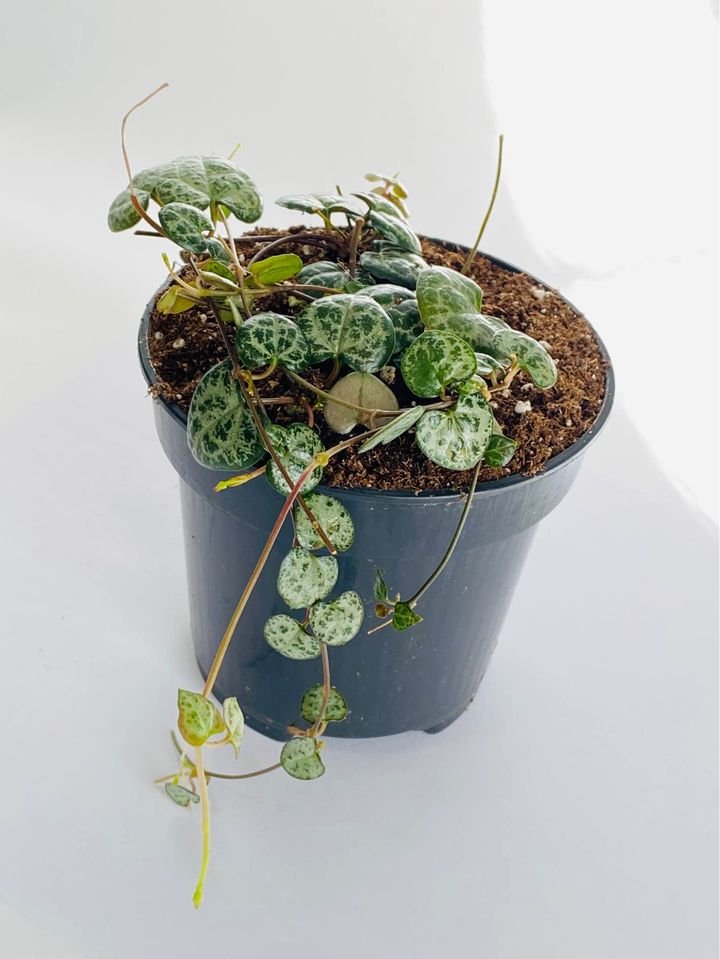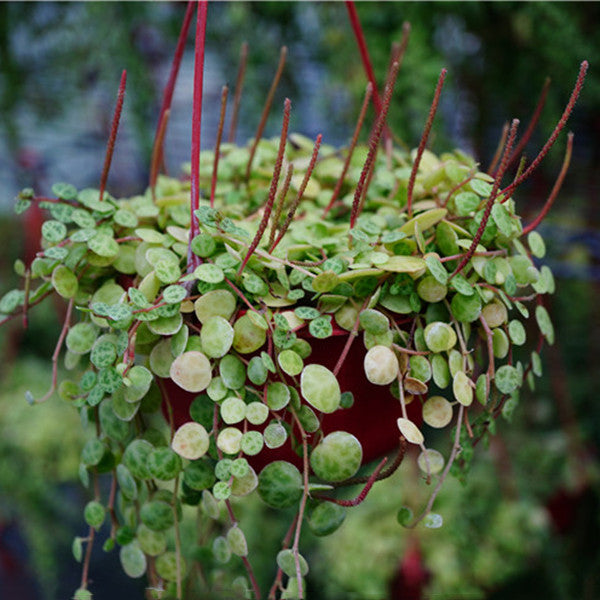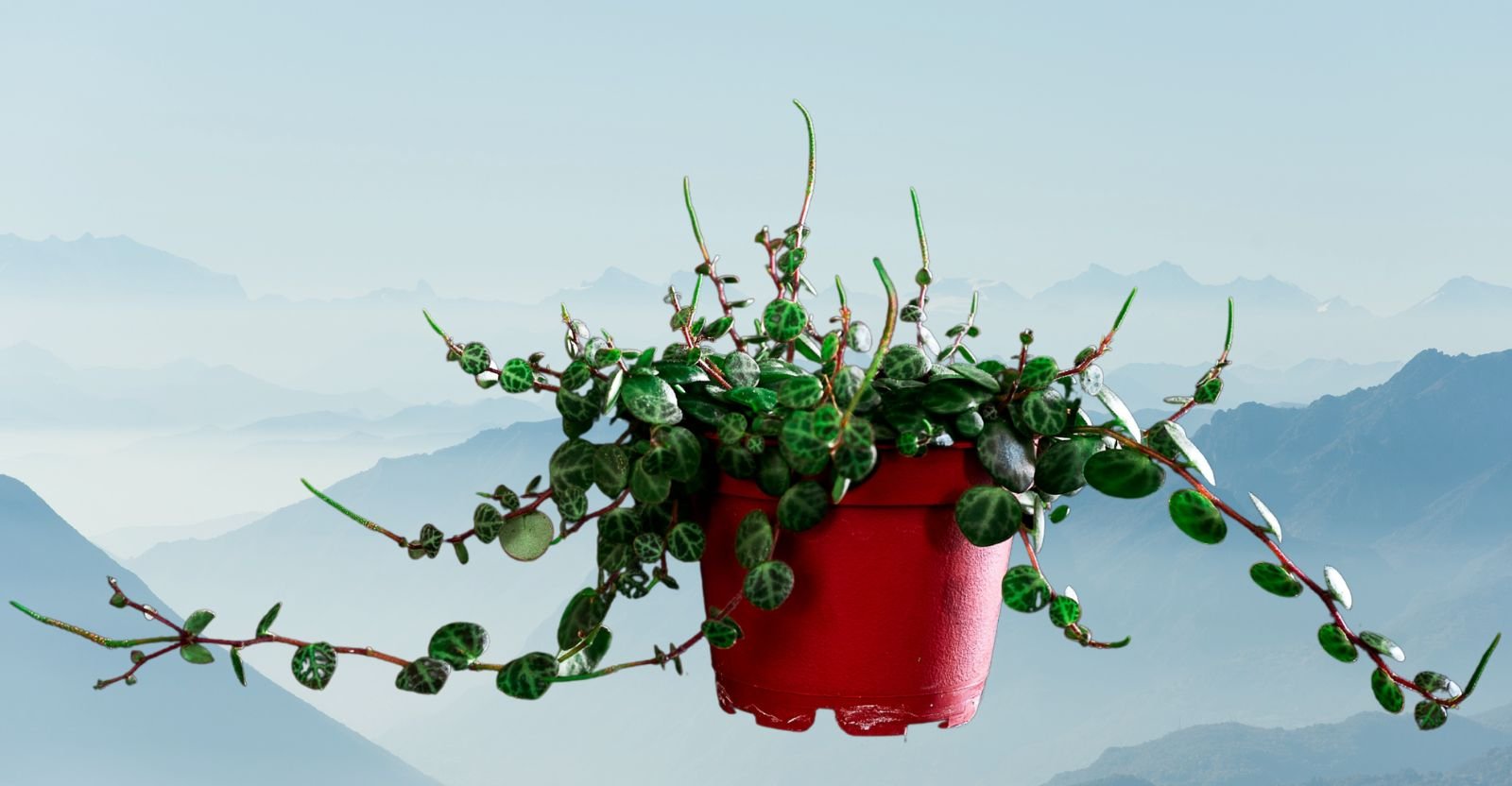
Peperomia Prostrata: Growth and Care
Peperomia Prostrata, often called String of Pearls, Jade Necklace, String of Turtles, or String of Hearts, is a charming little plant that originates from the rainforests of Ecuador and Costa Rica. It’s part of the Piperaceae family and is a great addition to your indoor or outdoor plant collection.
This slow-growing, low-maintenance plant is perfect for both novice and experienced plant lovers. With its unique, turtle shell-like leaf pattern, Peperomia Prostrata makes a stunning and eye-catching houseplant, especially when grown in hanging baskets, containers, or on a trellis.
Let’s dive into everything you need to know to grow and care for your Peperomia Prostrata.
Why You Should Plant Peperomia Prostrata

Peperomia Prostrata is not only easy to grow but also resilient to neglect, making it a great choice for beginners. In its natural habitat, it grows as an epiphyte, meaning it doesn’t rely on soil or water but instead thrives in cracks on rocks or decaying logs.
This plant typically grows up to 1 foot tall, with a slow growth rate. It matures in 3 to 5 years, producing beautiful glossy leaves that are dark green with silver and gold mottled patterns. As it matures, the leaves change color, and the plant takes on a rosette-like appearance. While it’s often considered a semi-succulent, it’s really a tropical perennial.
Peperomia Prostrata is a great choice for indoor spaces that receive indirect light. It’s especially well-suited for people who need a low-maintenance plant that doesn’t require constant attention.
Growth Conditions for Peperomia Prostrata

Here’s a quick look at the ideal conditions for growing this lovely plant:
- Soil: Well-drained, sandy soil is perfect. You can make a mixture with compost and peat moss for healthy growth.
- Watering: Water every 2 to 3 weeks, allowing the soil to dry out between watering sessions.
- Sunlight: Indirect, partial sunlight is best. Too much direct sunlight can harm the plant.
- Temperature: Peperomia Prostrata thrives in temperatures between 64°F and 75°F (18°C–24°C).
- Fertilizer: Use slow-release or diluted liquid fertilizer. Fertilize once a month during the growing season.
- Propagation: You can propagate this plant easily with stem or leaf cuttings.
- USDA Zone: This plant is suited for USDA zones 10-12.
How to Care for Your Peperomia Prostrata (String of Pearls)

Caring for Peperomia Prostrata is straightforward, but a few key things can ensure it thrives:
Soil Requirements
This plant prefers soil with good drainage. While it resembles a succulent, it’s not ideal to plant it in a potting mix made specifically for succulents. Instead, use well-drained organic soil with a mix of sand, perlite, or peat moss to maintain proper aeration. This prevents the roots from sitting in water, which could lead to rot.
If you find your plant struggling to grow, check if the soil is too acidic. Peperomia Prostrata prefers slightly acidic soil with a pH of around 5.5 to 6. You can amend the soil with sulfur to make it more acidic if needed.
Watering

Peperomia Prostrata doesn’t require frequent watering. In fact, overwatering can be detrimental to its health. Water the plant once every 2 to 3 weeks, ensuring the soil is dry to the touch before you water again. Overwatering may cause root rot, while underwatering could lead to wilted or flat leaves.
During warmer months, when the plant is actively growing, you may water it more frequently. In winter, cut back on watering. Always ensure the water drains properly and never let the plant sit in standing water.
Light Requirements

While Peperomia Prostrata isn’t overly fussy about light, it does prefer bright, indirect sunlight. Avoid placing it in direct sunlight as this can cause the leaves to burn. If you don’t have access to natural light, a spot with artificial light will also work.
Aim for about 7 to 8 hours of indirect light daily, and keep the room temperature between 64°F and 75°F (18°C–24°C) for optimal growth.
Fertilizing Your Peperomia Prostrata

Peperomia Prostrata doesn’t need much fertilizing, but occasional feeding can help it grow healthier. You can use a slow-release fertilizer or dilute liquid fertilizer every month during the growing season (spring and summer). In winter, when the plant goes dormant, skip fertilizing.
A balanced 10-10-10 fertilizer works best. If your soil already has plenty of organic material, you may not need to fertilize at all. Be cautious though—too much fertilizer can cause leaf drop, so it’s best to go light on it.
Pruning and Maintenance

Pruning helps to control the growth of Peperomia Prostrata and maintain a neat appearance. Regularly trim any overgrown stems or yellowing leaves to encourage bushier growth. Removing dead or damaged foliage also promotes a healthier plant.
For best results, use sterilized scissors or pruning shears. If your plant is growing too leggy, cutting it back will help it fill out and grow more densely.
Misting: Does Peperomia Like It?

Peperomia Prostrata has thick, waxy leaves that can tolerate dry air, but it benefits from light misting, especially during dry months. Misting helps prevent the leaves from drying out, keeping them hydrated and shiny. It also helps maintain humidity around the plant, which it prefers.
Propagating Peperomia Prostrata

Peperomia Prostrata is easy to propagate through stem or leaf cuttings. Here’s how:
- Select a Healthy Stem: Choose a stem with at least one healthy node and a couple of leaves.
- Cut the Stem: Using a sharp knife, cut about 1–2 inches below the node.
- Rooting: Optionally, dip the cutting in rooting hormone to encourage faster growth.
- Plant the Cutting: Place the cutting in a well-draining potting mix. Ensure it gets indirect light and keep the temperature optimal.
- Wait for Roots: It may take 6 to 8 weeks for the cutting to root.
Alternatively, you can propagate from a leaf cutting, though this typically takes longer and requires more care.
Flowers on Peperomia Prostrata

Peperomia Prostrata can flower, though it’s rare and not the main reason people grow this plant. The flowers are small, usually with white or dark red petals and a blue to white vein pattern. However, the plant’s striking foliage is the main draw.
Common Issues and Troubleshooting

Yellowing Leaves
If your Peperomia Prostrata starts to turn yellow, it could be due to overwatering, too much direct sunlight, or a lack of nutrients. The most common culprit is overwatering, which can cause root rot. If the soil is soggy, stop watering and let the plant dry out before resuming.
If the plant is exposed to too much sunlight, move it to a spot with indirect light. Also, check for pests like mealybugs or spider mites, which can cause yellowing leaves. Treat these with insecticidal soap or neem oil.
Toxicity to Pets

While Peperomia Prostrata is not highly toxic, it does contain calcium oxalate crystals, which can be harmful if ingested by pets like cats and dogs. Keep your plant out of reach of curious animals.
FAQs for Growing and Caring for Peperomia Prostrata
1. What are the ideal growing conditions for Peperomia Prostrata?
Peperomia Prostrata, also known as the “String of Turtles,” thrives in bright, indirect light but can tolerate lower light conditions. It prefers temperatures between 60°F and 80°F (15°C – 27°C) and moderate humidity levels. It also enjoys well-draining soil with a slightly acidic to neutral pH. Avoid direct sunlight, as it can scorch the leaves.
2. How often should I water my Peperomia Prostrata?
Peperomia Prostrata is a drought-tolerant plant and prefers to dry out between waterings. Water the plant when the top 1-2 inches of soil feel dry. Be sure to avoid overwatering, as it can cause root rot. Typically, watering once every 7-10 days is sufficient, but it depends on the environmental conditions like light, temperature, and humidity.
3. Can Peperomia Prostrata be grown in low light?
Yes, Peperomia Prostrata can tolerate low light, which makes it ideal for areas with indirect sunlight, such as offices, bathrooms, or shaded corners of the home. However, while it can survive in low light, it will grow more slowly and may have less vibrant coloring. For optimal growth, bright, indirect light is preferred.
4. How do I propagate Peperomia Prostrata?
Peperomia Prostrata can be easily propagated through stem cuttings. Take a healthy stem cutting with a few leaves attached, ensuring the cutting is about 2-3 inches long. Place the cutting in water or directly into a pot with well-draining soil. Once roots develop, transplant the cutting into a larger pot. Be sure to keep the cutting in a warm, bright spot while it roots.
5. What type of soil is best for Peperomia Prostrata?
Peperomia Prostrata prefers well-draining, lightweight soil. A cactus or succulent mix works well, or you can create your own mix by combining potting soil with perlite and sand for better drainage. Avoid heavy, moisture-retentive soils, as these can lead to root rot.
6. How do I fertilize Peperomia Prostrata?
Peperomia Prostrata doesn’t require frequent fertilization, but you can feed it with a diluted, balanced liquid fertilizer once every 4-6 weeks during the growing season (spring and summer). During the fall and winter months, reduce or stop fertilizing as the plant’s growth slows down. Over-fertilizing can cause leaf burn, so always dilute the fertilizer.
7. Why are the leaves on my Peperomia Prostrata turning yellow?
Yellowing leaves can be caused by a few factors:
- Overwatering: If the soil is too wet for extended periods, it can cause root rot and yellowing leaves. Ensure the plant is in a pot with good drainage and avoid keeping it in waterlogged soil.
- Nutrient deficiency: Yellowing leaves may indicate a lack of nutrients. Consider feeding your plant with a diluted fertilizer.
- Low light: While Peperomia Prostrata can tolerate low light, it may cause yellowing if the plant is not getting enough light. Move the plant to a brighter, indirect light location.
8. How can I encourage Peperomia Prostrata to grow more vigorously?
To encourage more vigorous growth:
- Ensure the plant is in a location with bright, indirect light.
- Water consistently but avoid overwatering. Let the soil dry out between waterings.
- Prune the plant regularly by cutting back leggy or unhealthy growth to encourage branching.
- Repot when necessary, especially when the plant outgrows its pot or if the soil has become depleted of nutrients.
9. Can Peperomia Prostrata be grown outdoors?
Peperomia Prostrata can be grown outdoors in tropical or subtropical climates (USDA hardiness zones 10-11). If you live in a warmer climate, you can place the plant in a shaded area with indirect light. However, in cooler climates, it’s best kept indoors, as it is not frost-tolerant.
10. How do I prevent pests from attacking my Peperomia Prostrata?
Peperomia Prostrata is generally resistant to pests, but it can occasionally attract mealybugs or aphids. Check the leaves regularly for any signs of pests. If you find pests, remove them manually with a soft cloth or use insecticidal soap or neem oil to treat the plant. Ensure the plant has good air circulation to discourage pest infestations.
11. How do I prune my Peperomia Prostrata?
Pruning Peperomia Prostrata is simple. Trim off any leggy or damaged stems to promote a fuller, bushier appearance. You can also trim back any unwanted growth to maintain the plant’s shape. Use clean, sharp scissors or pruning shears, and be sure to cut just above a leaf node to encourage new growth.
12. Is Peperomia Prostrata toxic to pets?
No, Peperomia Prostrata is non-toxic to pets, including cats and dogs. This makes it a great choice for households with curious animals.
Conclusion
Peperomia Prostrata is a low-maintenance and visually stunning plant that adds beauty to any space. With proper care, including the right light, watering, and occasional pruning, your plant will thrive and grow vibrantly. Whether you’re a seasoned plant enthusiast or a beginner, this plant will reward you with its unique appearance and ease of care. Happy gardening! 🌱🌿

